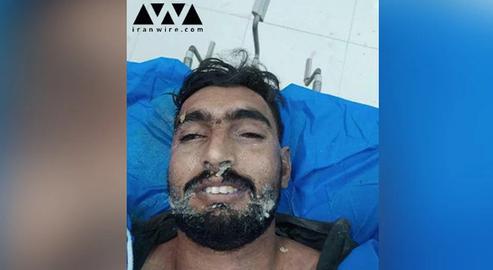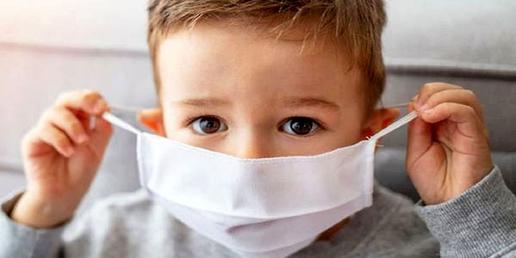On September 19, 2021, the Iranian state-owned IRNA News Agency reported the death of a fisherman in the Hor al-Azim wetlands, Khuzestan province. According to IRNA, the man was killed in an explosion after a leak in the gas transmission pipe of a nearby petrochemical facility. Two other local fishermen, the report said, were hospitalized with serious injuries.
Not long after IRNA’s report went live, officials in Khuzestan as well as IRGC-affiliated media outlets lined up to deny the incident had ever taken place. Mohammad Bostanzadeh, the safety director of the South Azadegan oilfield project, told Fars News Agency there was no gas transmission line in the area where the accident took place. Rather, they said, the incident related to effluent waste and sewage in the lagoon – and there had been two deaths, not one.
IranWire’s own enquiries have established that the latter version of events was correct. Two men, an uncle and nephew, were killed and at least three others were seriously harmed, all three of whom are now fighting for their lives in Hoveyzeh Hospital.
***
On Sunday night, Hossein Silavi and his uncle, Sabti Nisi, went fishing with a group of Arab citizens in the village of Upper Malekiyeh, Hor al-Azim. It’s customary for locals to go fishing at night, when the atmosphere is still and quiet, and the group thought nothing of it. Hours later, uncle and nephew would be lying flat on the ground, half-naked and with white liquid issuing from their mouths as they breathed their last.
The horrific moment was captured on video by a bystander. “It’s not clear how they fell into that poisonous, stinking area,” a source close to the devastated family told IranWire. “The place where the accident took place is exactly the spot where the effluents are discharged. Some witnesses said they heard an explosion nearby which badly shook the boat. Others thought the electric motor they used while fishing might have short-circuited, and the shock caused them to be thrown into the water. We still don’t even know what happened.”
Three other fishermen who ran to the pair’s aid were then severely poisoned, and are still in hospital now. They were transferred out of area because local medical centers were not equipped to care for them. Meanwhile, the governor of Maysan District in Dasht-e Azadegan County said the bodies of the two deceased had been transferred to the Legal Medicine Organization for testing. The cause of death, he said, would be announced in due course.
This isn’t the first time locals have been poisoned by fumes and effluents from nearby oil facilities while fishing in Hor al-Azim. In fact, one resident told IranWire, “Just a week ago, a 30-year-old named Mahmoud Savari died while fishing on the wetlands. He was also from Dasht-e Azadegan and the city of Rafi, and the cause of death was similar to what you saw in the video.
“No clear answer has yet been given to any of the victims’ families. Neither MPs, nor the Environmental Department, nor the Legal Medicine Organization, have commented on the cause of death. The three people who were taken to Hoveyzeh Hospital have also not yet been able to speak. We don’t even know if they’ll survive.”
“Hor al-Azim Has Become a Tomb”
Back in July 2017, Ghasem Saeedi, a member of parliament for Azadegan and Hoveyzeh, told Khaneh-e Mellat News Agency that part of the colossal drying-up of Hor al-Azim had come about because of the discharge of waste and raw sewage from agricultural sites. “Instead of taking water from the Karkheh River,” he said, “this wetland being is fed by various types of untreated agricultural runoff. Not only is this not useful, but it will destroy the wetlands’ natural ecosystem.”
Another source in the area told IranWire: “I spoke to a local fisherman who’s very familiar with the area where the men died. He said it’s not even possible to walk within 100 meters of it because of the disgusting smell in the air. The wastewater from oil companies, and effluents from farmland, are so noxious that if a boat enters the area, it’s not at all unlikely that [the driver] would fall into the sewage from sheer nausea.”
In November 2019, Mohammad Javad Ashrafi, Director-General of Khuzestan Environmental Department, had confirmed: “Agricultural runoff contains toxins and chemical fertilizers, and affect salinity. These effluents should not normally enter the wetlands. But the drainage networks west of Karkheh are still incomplete.”
Then in July this year, protests erupted in cities across Khuzestan due to chronic, long-term water shortages. Protesters laid the blame on decades of mismanagement, reckless dam-building and the razing of the wetlands to make room for petrochemical plants. In the ensuing crackdown by security forces, at least 13 people were killed, and hundreds more detained.
Mohammad Darwish, an Iranian environmentalist and desert researcher, directly blames the Ministry of Oil and oil companies for the wrecking of Hor al-Azim. Oil extraction under former president Mahmoud Ahmadinejad was partly outsourced to Chinese contractors and, Darwish said, "The Chinese firms said that if the wetland were dried it would cut costs by 20 percent. So they came to the conclusion it was better to dry it up.” In order to extract oil from Hor al-Azim, he noted, a road had been built through parts of the former wetland that had now been reduced to a salt marsh.
"Salt marsh is an optimistic description for Hor al-Azim," said a local source in response. “Hor al-Azim has become a massive tomb that devours fish, buffaloes, ranchers and fishermen. We should no longer call it the Hor al-Azim wetland. We should call it a deadly swamp. All the people came down to the streets, and shouted out that there was no water; what happened to us then except for shootings, beatings with batons and false promises? Nothing. Just death, and nothing else."
Related coverage:
In Pictures: Khuzestan's Vanishing Waterways
The Water Crisis in Iran's Khuzestan Province
Desertification in Iran: A Ticking Time Bomb?
Dispatch from Rofayyeh: Khuzestan's Precious Water Buffalo Face Critical Threat
One Hour of Running Water a Day for Residents of Oil-Rich Khuzestan
Iran Protests: Grenade Launchers and Shotguns Used on Protesters
Solidarity With Khuzestan Water Protests Spills Into Other Iranian Provinces
visit the accountability section
In this section of Iran Wire, you can contact the officials and launch your campaign for various problems



























comments